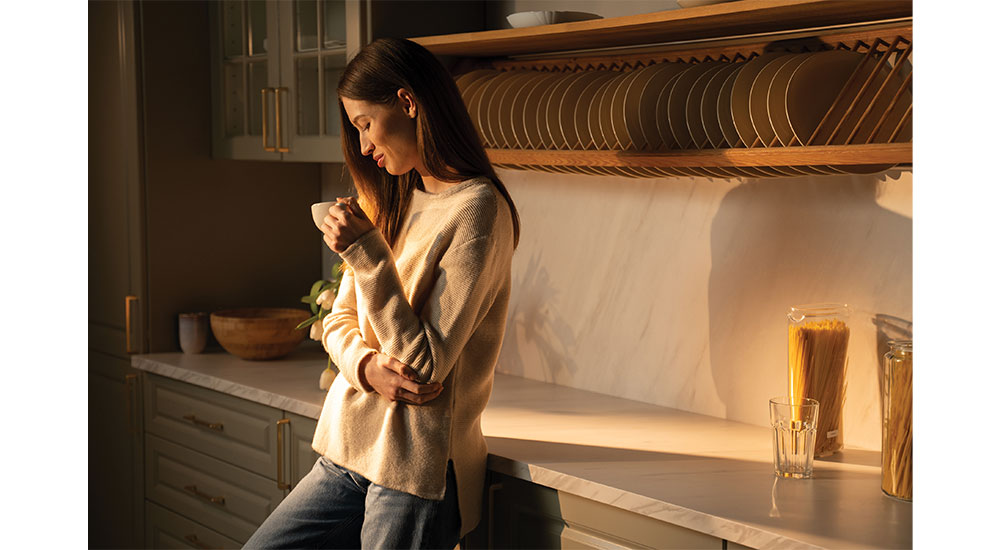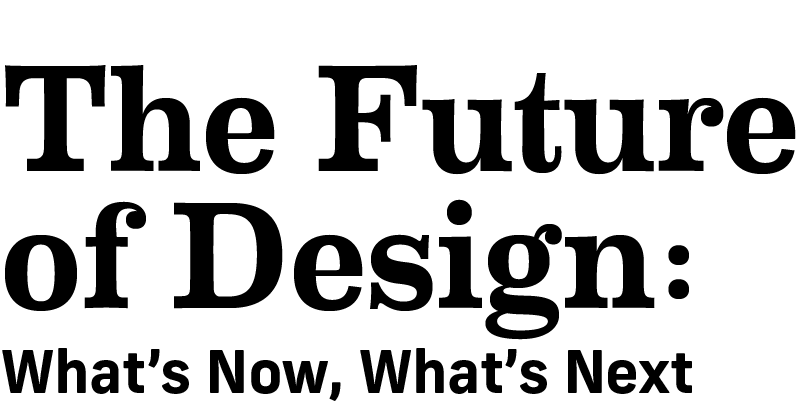When we talk about design for safety in the kitchen, we tend to focus on sharp knives, hot stoves or slip-resistant flooring. But what if true safety extended beyond cuts, burns and falls? What if a truly safe kitchen also nurtured calm, emotional clarity and physiological well-being?
In today’s wellness-driven world, we need to consider expanding our definition of safety. It’s not just about injury prevention – it’s about how our bodies and minds respond non-consciously to the environments we inhabit daily.
Tension in the Heart of the Home
The kitchen is more than a functional workspace; it’s where we gather, decompress, nourish and connect. However, it can also be a subtle source of stress. Bright lights, clashing materials or patterns, mismatched hues, strong odors, chaotic storage, disconnected layout – even persistent noise can quietly tax the body when we don’t consciously recognize it.
Cluttered, disorganized cupboards and drawers, overcrowded countertops or open shelving overflowing with pantry goods doesn’t just create visual noise, it can trigger a physiological stress response. Neuroscience research shows that clutter competes for our attention, forcing the brain to work harder to process what is relevant. This leads to cognitive overload and fatigue, thereby reducing our working memory, making it harder to focus. Studies also show that people living in cluttered environments tend to have higher cortisol levels, which can negatively affect sleep, immunity and emotional regulation. In short, clutter isn’t just inconvenient, it’s a biological stressor.
Where the Body Comes In
This is where design shifts its focus from surface-level functionality to an understanding of human biology, especially the nervous system. Our environments affect all 11 body systems, including the endocrine system (our hormone regulator), which responds to prolonged stress with elevated cortisol levels; the respiratory system, which is impacted by air quality and off-gassing; and the digestive system, which only functions optimally when the body is in a parasympathetic “rest and digest” state.
But perhaps most overlooked is the Vagus nerve, a central player in the parasympathetic (rest and digest) nervous system that connects the brain to the heart, lungs and digestive tract. It governs our ability to regulate stress, digest food, speak clearly and even bond socially. A calm kitchen supports vagal tone through soft acoustics, natural lighting, lack of clutter and intuitive flow. However, when environments are jarring, disorganized or overstimulating, the Vagus nerve takes the hit – and so does our emotional resilience.
Design for Well-Being
Lighting, layout and material choices can influence the release of key neurotransmitters like dopamine (motivation and reward), serotonin (calm and emotional regulation) and oxytocin (social bonding and trust). A well-designed, safe kitchen can subtly support these chemicals, reducing friction, encouraging social connection and even promoting healthier eating behaviors.
Yet it’s not just about maintaining moment-to-moment comfort. We must also consider the long-term effects of living in spaces that challenge our biology. Homeostasis describes the body’s effort to maintain equilibrium, but life demands adaptation – and that’s where allostasis comes in. When kitchens constantly force us to adapt through poor layout, confusing zones or sensory chaos, the body experiences allostatic load: a cumulative wear and tear that can lead to chronic fatigue, inflammation and cognitive decline. This impact is especially important as we age.
To truly future-proof our spaces and make them safe, designers must support not only present function but long-term resilience. We should be asking: Does this kitchen help someone move through it with clarity, confidence and calm? Or does it chip away at their sense of ease, one overstimulating moment at a time?
Reaction & Response
Emotional safety is not a concept typically tied to kitchen design, but it should be. It means feeling grounded, in control and free from overwhelm – the quiet opposite of hypervigilance. Even subtle design choices like a bench seat beside a window that offers prospect and refuge (biophilia), can tap into our evolutionary desire to feel sheltered and connected to the natural world. Our brains, shaped by nature over thousands of years, still seeks that balance of openness and protection – even while preparing dinner.
Reading the Room
The kitchen should be a space that reduces stress, supports emotional connection and fosters well-being through an understanding of how we’re wired. It’s a space that honors how our brains and bodies process the built environment, often without conscious thought.
As kitchen designers, the opportunity and the responsibility has never been greater. This is the new frontier: design grounded in science, driven by empathy and created to support the occupant’s nervous system – not just their hands and feet.
It starts with education. If you design for people, it’s time to understand the “WHY” behind how people respond to space. When we design with the body and brain in mind, we’re not just creating kitchens, we’re creating places of safety, nourishment and connection.









